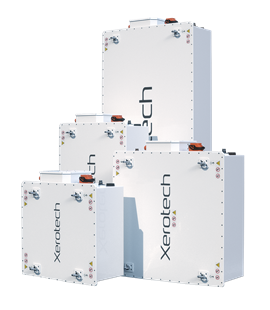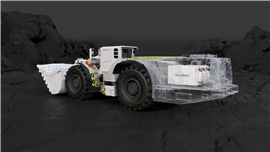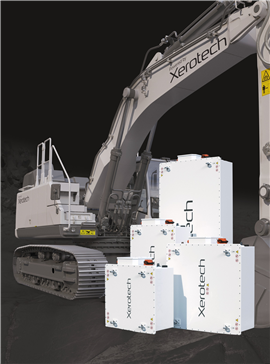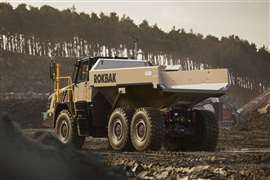Lithium-Ion Batteries Powering The Change In Construction
31 August 2023
SPONSORED CONTENT
Nowadays, off-highway electric vehicles offer 40% better efficiency and cheaper total cost of ownership than some combustion engines, while also doing away with inefficient hydraulic and braking systems. Furthermore, zero emissions and silent running make for healthier worksites. Read on to find out what battery electric vehicles can bring to the construction industry.

Electrification in the construction vehicle market is picking up pace, whether due to emission-related policies, the need for sustainable operations, or that technologies such as lithium-ion (Li-ion) batteries are proving just as effective, if not more, than combustion engines.
With Li-ion batteries, reducing emissions is just one of the many advantages. Another is fuel savings, as companies are no longer held hostage to fluctuating diesel prices and can rely on grid power or renewable energy storage devices to charge batteries. This helps reduce an organization’s carbon footprint and ensures its commitment to increased sustainability across the supply chain.
A significant difference is that BEVs do not idle, a widespread occurrence with internal combustion engines (ICEs) contributing to unnecessary fuel waste and emissions. Li-ion batteries only discharge energy when needed, such as when the vehicle accelerates or when an excavator’s arm is used.
Propulsion by electric power is far more efficient, as the drive goes straight to the motors, resulting in approximately 75% better tank-to-wheel energy efficiency. Furthermore, a BEV’s simpler mechanical setup means far fewer parts, contributing to lower maintenance costs. Electrifying the braking system removes brake fluid, reducing costs and malfunction risks and introducing energy recovery systems that charge the battery when engaged.

Xerotech demonstrated these advantages and more together with Advanced Control in the Elcavator project. The Hibernium® battery designed for this application provides 634V and 190kWh, which allows for the installation of a motor on each axis for increased efficiency, removing the need for any hydraulic systems.
The energy generated by lowering the boom can be transferred back to the battery to recharge it or diverted to the various motors during power-hungry tasks. The scale of efficiency was revealed in the data analysis, where the Hibernium® battery could shift 80% of the energy produced into machine operation vs. 40% with the original diesel components.

For ICEs, that 40% mark is typical, and even if it were a diesel-electric engine, a fully electric system would still outperform it in that metric. In the Elcavator’s case, the battery pack provided five hours of continuous operations, with a 30-minute charge required to complete an eight-hour shift.
With far less heat dissipation and no exhaust, Li-ion power makes for healthier, quieter, and more comfortable workspaces that benefit employees and, in cases of city construction projects, potential nearby residents and commuters.
As Advanced Control’s Kjell Ramsli noted, the Elcavator required no extra operator training, as it works the same as a conventional excavator, and the battery was designed to fit beside the pump and drive systems already present.
If you want to electrify a prototype or your entire construction fleet, reach out to a Xerotech representative and find out how we can help you power the change.
STAY CONNECTED


Receive the information you need when you need it through our world-leading magazines, newsletters and daily briefings.
CONNECT WITH THE TEAM










